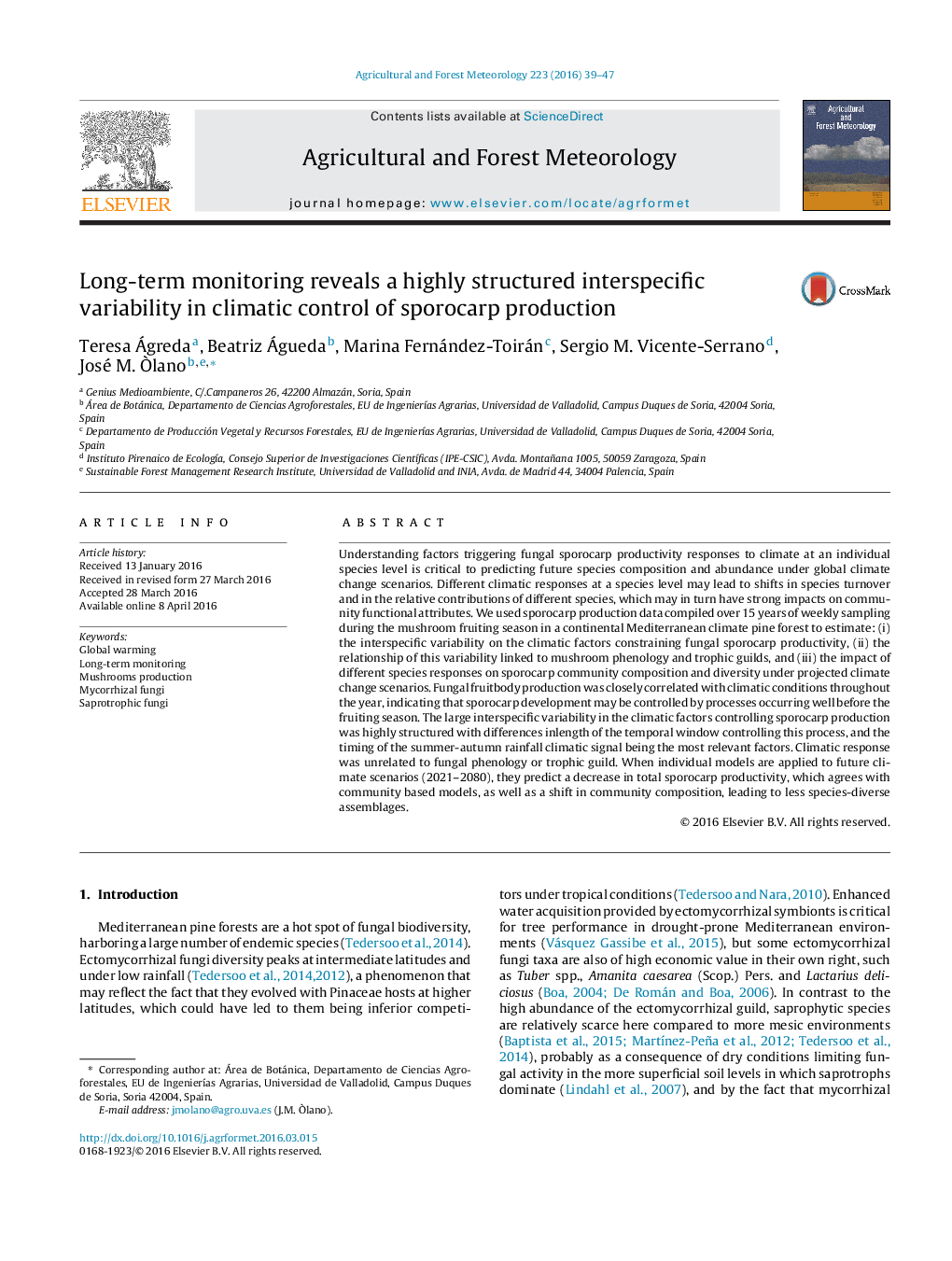| کد مقاله | کد نشریه | سال انتشار | مقاله انگلیسی | نسخه تمام متن |
|---|---|---|---|---|
| 81545 | 158322 | 2016 | 9 صفحه PDF | دانلود رایگان |

• Global warming is altering forest fungi sporocarp production.
• Deciphering species level climate response is critical to forecast sporocarp community.
• Sporocarp production responded to climate during and before a fruiting season.
• Variability in species-level climatic response was highly structured.
• Individual models predict a shift in sporocarp community with declining diversity.
Understanding factors triggering fungal sporocarp productivity responses to climate at an individual species level is critical to predicting future species composition and abundance under global climate change scenarios. Different climatic responses at a species level may lead to shifts in species turnover and in the relative contributions of different species, which may in turn have strong impacts on community functional attributes. We used sporocarp production data compiled over 15 years of weekly sampling during the mushroom fruiting season in a continental Mediterranean climate pine forest to estimate: (i) the interspecific variability on the climatic factors constraining fungal sporocarp productivity, (ii) the relationship of this variability linked to mushroom phenology and trophic guilds, and (iii) the impact of different species responses on sporocarp community composition and diversity under projected climate change scenarios. Fungal fruitbody production was closely correlated with climatic conditions throughout the year, indicating that sporocarp development may be controlled by processes occurring well before the fruiting season. The large interspecific variability in the climatic factors controlling sporocarp production was highly structured with differences inlength of the temporal window controlling this process, and the timing of the summer-autumn rainfall climatic signal being the most relevant factors. Climatic response was unrelated to fungal phenology or trophic guild. When individual models are applied to future climate scenarios (2021–2080), they predict a decrease in total sporocarp productivity, which agrees with community based models, as well as a shift in community composition, leading to less species-diverse assemblages.
Journal: Agricultural and Forest Meteorology - Volume 223, 15 June 2016, Pages 39–47